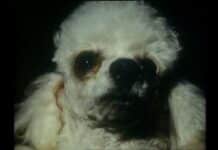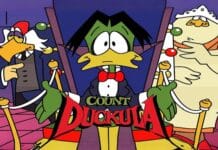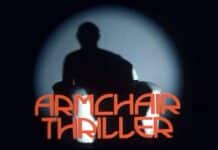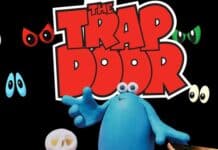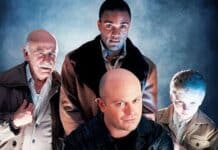A Fresnel Lens provides an unexpected window into the past. RICHARD PHILLIPS-JONES ends series one in his Shadows episode guide with The Other Window.
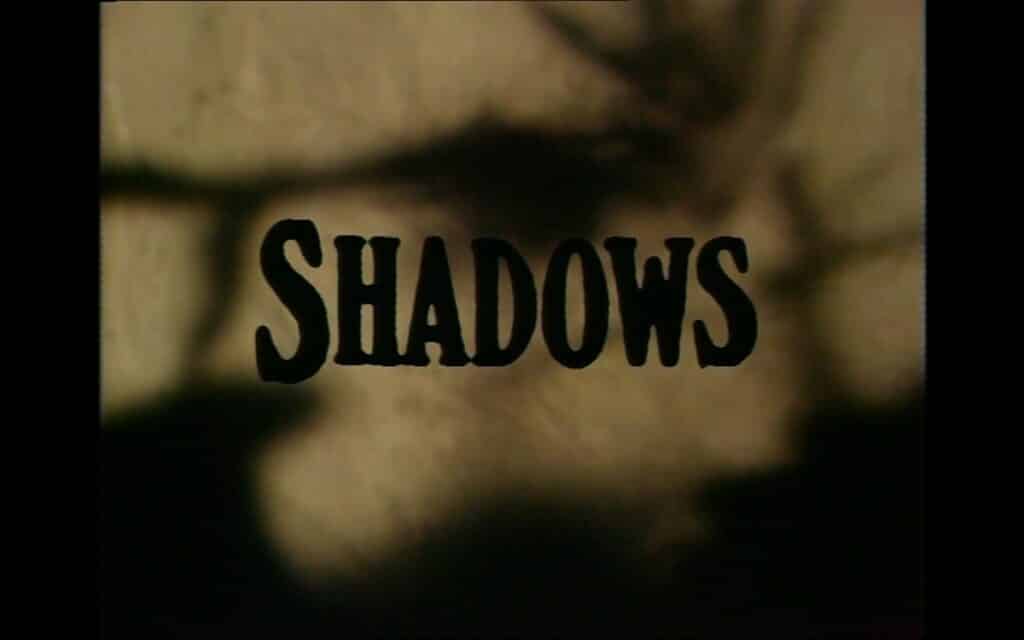
BROADCAST: 15 October 1975
STARRING: John Woodvine, Aimee Delamain, Sophie Ward, Roy Jacobs, Gwyneth Strong
WRITER: Jacquetta Hawkes and J.B. Priestley
DIRECTOR: Darrol Blake
Shadows: The Other Window Review
A scientist (Woodvine – the character is named on the credits simply as “Father”) brings home a Fresnel Lens, given to him by a colleague working at the same laboratory. For the benefit of his children, he fixes it to a window facing out to the family garden.
Elder siblings Elizabeth (Strong) and Mark (Jacobs) aren’t especially impressed, but little Jan (Ward) is immediately smitten by the device, proffering the theory that if she stares into it for long enough, people will appear.
It turns out that Jan’s theory isn’t just childhood daydreaming: The lens enables a user to view the garden as it was in an earlier time, with what appears to be a courting couple in Victorian clothes: The two are approached by a soldier, who hands a letter to the man, as though enlisting him into the army.
An excited Jan tells this to her brother and sister, but they are naturally disbelieving, until they look through the lens themselves. When they do, Mark sees Cavaliers and Roundheads, while Elizabeth is convinced that she is seeing images from the time of the Norman conquests.
The three are eager to share the discovery with their father, who needs a lot of convincing and only begins to take the matter seriously when the Grandmother of the family (Delamain) sees the same things as Jan. It’s just as well that he finally believes, since he is needed to intervene when the images take on a somewhat more sinister demeanour, and the figures seem to be trying to break out of their own world…
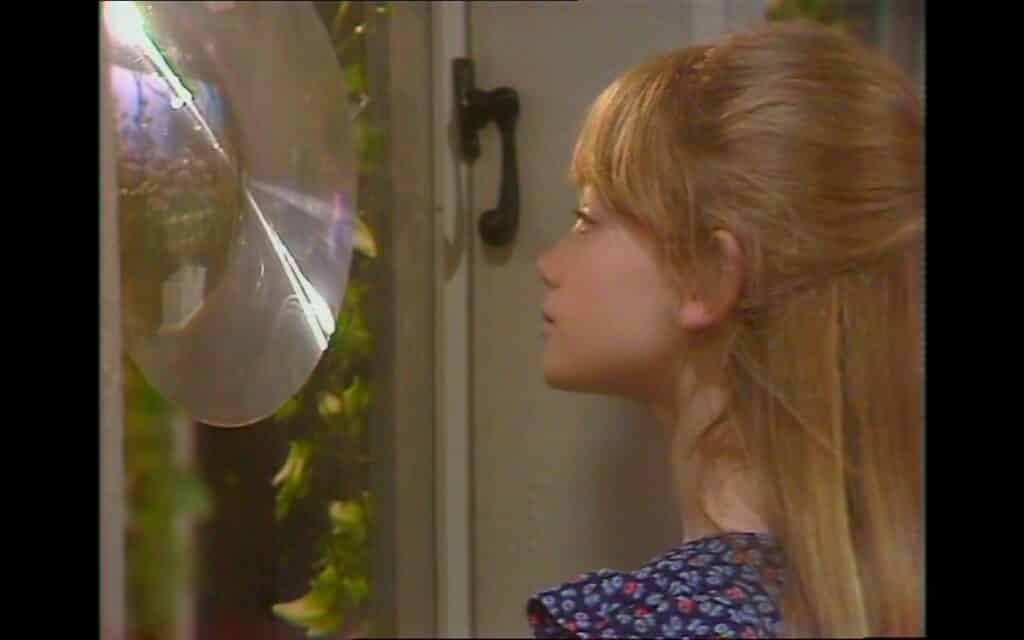
Time travel had featured so heavily throughout the first series of Shadows that it seems appropriate that it should end with another variation on the theme, and from a very prestigious husband-and-wife writing team.
There’s a fair quota of educational content to kick-off The Other Window, as the father reels off an explanation of exactly what a Fresnel Lens is. Indeed, The Other Window is very heavy on explaining itself at every possible turn, and ultimately, whilst the episode is not without its charms, the darker elements within the story don’t really get much of a look-in, with no real time given for them to develop in a genuinely creepy manner.
The end result, with its somewhat ham-fisted shoehorning of scientific exposition and historical info, feels more like something produced for ITV’s Schools & Colleges programmes of the time. Still, if taken on that level, The Other Window works well enough and, if it gives the first run of Shadows a somewhat underwhelming conclusion, that only serves to emphasise the heights the show had reached in the very best episodes of its debut run.
TRIVIA POINTS: Arguably one of the most familiar of actors in British film and television, John Woodvine is especially beloved around these parts for his role as Dr. Hirsch in An American Werewolf In London (1981).
Gwyneth Strong would join the cast of Only Fools And Horses in 1989 as Cassandra Trotter, whilst Sophie Ward went on to roles in Heartbeat (from 2004-06) and Land Girls (2009-11), amongst many others. By contrast, Roy Jacobs seems to have left acting altogether after this role.
FOOTNOTE: J.B. Priestley was no stranger to spooky themes, as demonstrated in The Old Dark House (filmed by Universal in 1932 and Hammer in 1963), whilst the ending of perhaps his most celebrated play, An Inspector Calls (debuted in 1945) might be open to a supernatural interpretation.
The concept of time was also a regular feature of Priestley’s work: The phenomena of déjà vu provided the focal point of I Have Been Here Before (a 1937 play), whilst The Magicians (a 1954 novel) and Time And The Conways (a 1937 play) are prime examples of the writer’s penchant for hopping between different periods in characters’ lives.


